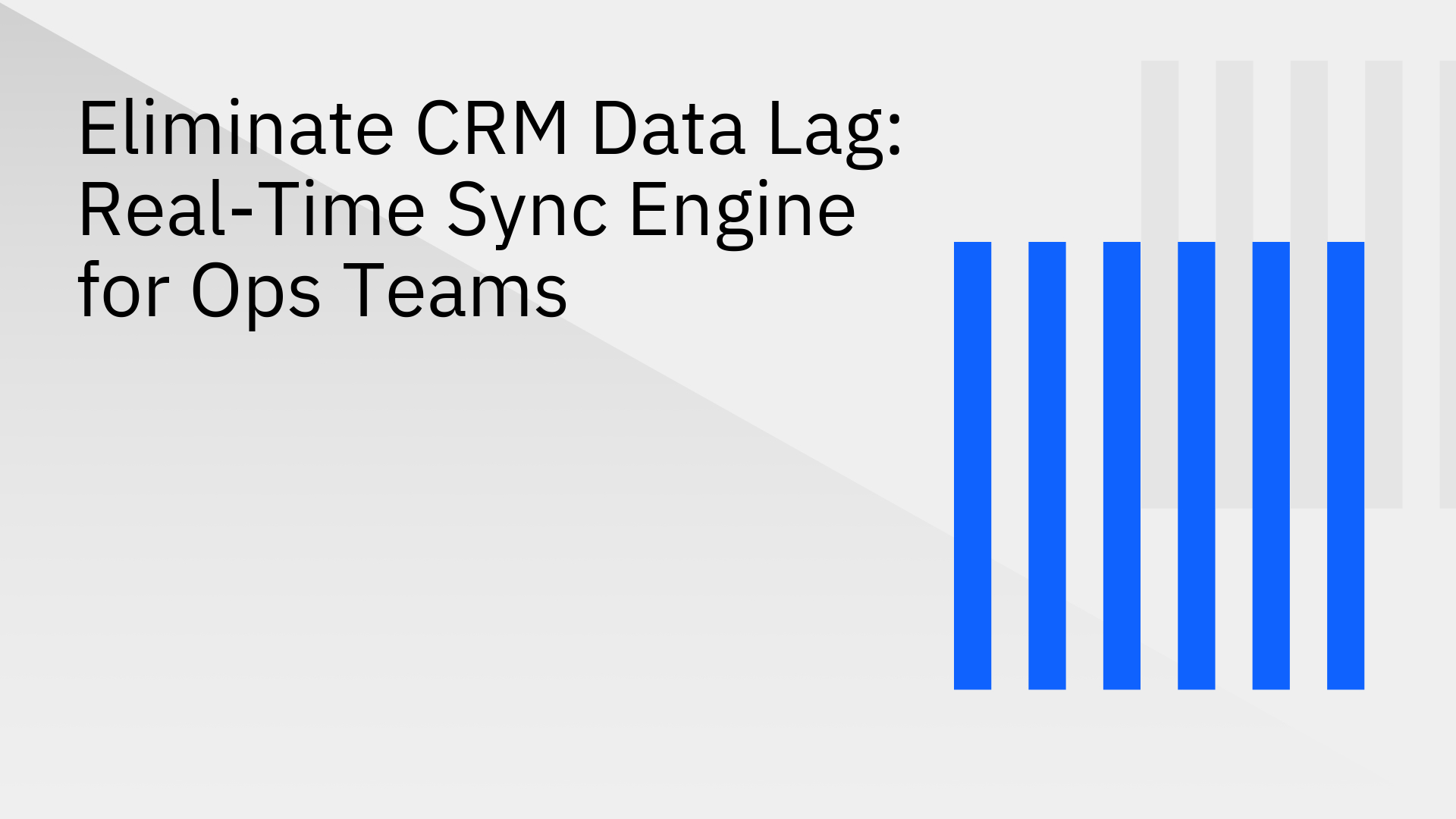

For any modern operations team, data is the basis for forming and testing business hypotheses. The problem is that these hypotheses are often evaluated using outdated CRM data. This data lag the latency between when an event occurs and when it is reflected across all integrated systems leads to flawed conclusions, costly mistakes, and operational inefficiency.
The empirical solution is to eliminate this lag with a CRM real time data synchronization engine, empowering your teams with instant, verifiable data.
Data lag is a primary independent variable contributing to "bad data"—information that is inaccurate, incomplete, or outdated. The operational and financial impact is not a matter of conjecture. On average, bad data costs companies $15 million annually and can waste up to 27% of a sales representative's potential selling time [1]. Many organizations delay addressing the systemic issues in their CRM, unaware of the compounding damage it causes to resources and opportunities [2].
Let's examine a quantifiable example: for a company generating $30 million in revenue, wasted time due to bad data can translate to over $400,000 in lost productivity. Reallocating that time could unlock an additional $1.2 million in potential revenue [3]. On a macroeconomic scale, bad data has become a multi-trillion-dollar-per-year problem that corrupts business assessments and leads to poor strategic decisions [4]. Accessing high-quality data resources is a critical first step for any organization looking to mitigate these costs [5].
Legacy integration methods are a significant source of CRM data lag. These outdated data transfer protocols are ill-equipped for the velocity and demands of modern business operations. They introduce more variables and potential points of failure than they resolve. Understanding their inherent flaws is the first step toward architecting a more robust solution, as detailed in these 7 critical sync CRM challenges and how modern integration platforms solve them.
Batch processing involves synchronizing data on a fixed schedule, such as hourly or daily. This method guarantees significant periods where data exists in a state of desynchronization across different systems. Consequently, teams are constantly operating with outdated information, which invalidates reporting and forces reactive, rather than proactive, operational models.
Many teams still depend on manual data entry or one-off custom scripts to transfer data. These methods are not only susceptible to human error but are also fundamentally unscalable and difficult to maintain. They typically lack robust error-handling protocols and consume valuable engineering resources that should be allocated to core product innovation.
API polling is a technique where one system repeatedly queries another for updates. This model introduces several systemic problems:
A modern sync engine provides a definitive solution by employing an event-driven architecture. Instead of pulling data on a schedule, it uses technologies like webhooks to capture and transmit changes the moment they occur. This ensures data integrity is maintained across your entire technology stack. The architecture behind Stacksync's sub-second latency is purpose-built to deliver this level of speed and reliability.
In today's operational environment, "real-time" means syncing data with millisecond latency, not minutes or hours. This velocity is mission-critical for use cases like programmatic lead routing, customer support escalations, and financial reporting, where any delay can negatively impact the customer experience and the bottom line [6]. Shifting from delayed reporting to real-time data input is essential for gaining a competitive advantage in sales [7].
A performant synchronization platform must be engineered to scale from thousands to millions of records without requiring manual intervention. Key features like issue management dashboards, automated retries for transient failures, and intelligent handling of API rate limits ensure that data flows with high fidelity, preventing silent data corruption. You can explore these Stacksync features for real-time bi-directional data sync efficiency to understand how this is achieved.
A powerful sync engine functions as more than a data transport layer; it serves as the central nervous system for triggering automated workflows across your applications. For example, you can automatically enrich a new lead in your CRM with product usage data from your database or trigger the creation of a project in a management tool the moment a deal is closed. This transforms a simple data mover into a powerful engine that enables real-time sync features for enterprise data consistency.
Stacksync is the purpose-built, real-time sync engine designed to meet the rigorous demands of modern operations teams. Our platform directly resolves the challenges of data lag with a reliable, scalable, and modern approach to CRM integration.
Data lag is a significant but solvable operational problem. Relying on outdated information creates a competitive disadvantage that no modern business can afford. Research indicates that 80% of organizations still depend on outdated data, leading to flawed decisions and financial losses [8].
Stop basing critical decisions on yesterday's data. It is time to empower your teams with the real-time, high-fidelity insights needed to drive growth and operational excellence. Unify your tech stack and eliminate data lag with a solution engineered for the speed of your business.
Book a demo to see Stacksync's real-time sync in action.